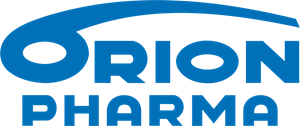Combination therapy
No results were found for your selected species
Nuflor
Active substance
ATC code
Species
Pigs (for fattening)
Indications
For the treatment and metaphylaxis of swine respiratory disease caused by
Pasteurella multocida susceptible to florfenicol in infected herds. The presence of the disease in the herd must be established before the veterinary medicinal product is used.
Dose to be administered and administration route
Oral use.
Dosage:
10 mg of florfenicol per kg body weight (equivalent to 250 mg veterinary medicinal product) per day administered for 5 consecutive days.
Administration:
For a daily feed intake of 50 g/kg body weight, this dosage corresponds to a rate of incorporation of 5 kg of the veterinary medicinal product per ton of feed, i.e. 200 ppm of florfenicol.
The rate of incorporation of the veterinary medicinal product in the feed may be increased in order to achieve the required dosage on an mg/kg body weight basis and to take into account the actual feed intake. Thus, the inclusion level may need adjusting as follows to give the correct dose.
The maximum rate of incorporation is 12.5 kg/ton (500 ppm of florfenicol); higher rates of inclusion may lead to poor palatability and decreased food consumption. Under no circumstances should the incorporation rate of the veterinary medicinal product be below 5 kg/ton of feed.
In all cases the recommended dose of 10 mg of florfenicol per kg of body weight per day, for 5 consecutive days has to be respected.
To ensure a correct dosage body weight should be determined as accurately as possible to avoid underdosing. The required dose should be measured by suitably calibrated weighing equipment.
A horizontal ribbon mixer should be used to incorporate the veterinary medicinal product into the feeding stuff. It is recommended that the veterinary medicinal product is added to the mixer containing the feeding stuff ingredients and mixed thoroughly to produce a homogeneous medicated feeding stuff. Medicated feed may also then be pelleted. Pelleting conditions include a pre-conditioning step with steam and then the mixture is passed through a pelleter or extruder under normal conditions.
Adverse reactions
Pigs (for fattening):
|
Common (1 to 10 animals / 100 animals treated): |
Diarrhoea1, Perianal inflammation1, Rectal prolapse1 |
|
Undetermined frequency (cannot be estimated from available data) |
Hypercalcaemia1 |
1These effects are transient, resolving on cessation of treatment.
Reporting adverse events is important. It allows continuous safety monitoring of a veterinary medicinal product. Reports should be sent, preferably via a veterinarian, to either the marketing authorisation holder or its local representative or the national competent authority via the national reporting system. See the package leaflet for respective contact details.
Dispensing
POM-V - Prescription Only Medicine – VeterinarianEMA Categorisation
SUMMARY OF PRODUCT CHARACTERISTICS
1. NAME OF THE VETERINARY MEDICINAL PRODUCT
Nuflor 40 mg/g Premix for Medicated Feeding Stuff for Swine
2. QUALITATIVE AND QUANTITATIVE COMPOSITION
Composition per gram:
Active substance:
|
Florfenicol Excipients: |
40 mg |
|
Propylene Glycol (E 1520) |
10 mg |
|
Ground Limestone |
qs to 1g |
For the full list of excipients, see section 6.1.
3. PHARMACEUTICAL FORM
Premix for medicated feeding stuff.
White to off-white, free flowing powder with red and/or black grains dispersed throughout.
4. CLINICAL PARTICULARS
4.1 Target species
Pigs (Fattening pigs)
4.2 Indications for use, specifying the target species
For the treatment and metaphylaxis of swine respiratory disease caused by
Pasteurella multocida susceptible to florfenicol in infected herds. The presence of the disease in the herd must be established before the product is used.
4.3 Contraindications
Do not administer to boars intended for breeding.
Do not use in case of hypersensitivity to the active substance or any of the excipients.
4.4 Special warnings for each target species
Animals showing a decreased appetite and/or a poor general condition should be treated by the parenteral route.
4.5 Special precautions for use
Special precautions for use in animals
The product should be used in conjunction with susceptibility testing and take into account official and local policy relating to the use of antimicrobials.
This premix is intended for the manufacturing of solid medicated feed and cannot be used as it is; the incorporation rate of the premix in feed cannot be lower than 5 kg/ton.
This premix contains ground limestone, which can lead to a decrease in food consumption and to a phosphorus calcium imbalance in feed intake. Care should therefore be taken to consider the calcium content of the final medicated feed.
Treatment should not exceed 5 days.
In a field clinical study, within a week after the administration of the last dose, the incidence of pigs presenting either mild depression and/or mild dyspnea and/or pyrexia (40°C) was approx. 20 % in the initially severely ill animals.
Special precautions to be taken by the person administering the veterinary medicinal product to animals
Skin sensitisation may occur.
Avoid skin contact.
Do not handle this product in case of known sensitization to active substance or any of the excipients.
Handle this product with care to avoid exposure during incorporation of premix into feed and administration of feed to animals, taking all recommended precautions. Wear either a disposable half-mask respirator conforming to European standard EN
149 or a non-disposable respirator to European Standard EN 140 with a filter to EN 143, chemically resistant gloves, protective coveralls and goggles while incorporating the premix into feed.
Wear gloves and do not smoke, eat, or drink when handling the product or medicated feed.
Wash hands thoroughly with soap and water after use of the product or medicated feed.
Rinse thoroughly with water in case of exposure.
If you develop symptoms following exposure such as skin rash, you should seek medical advice and take the package leaflet or the label with you.
Other precautions
Manure from treated swine must be stored for a minimum of one month before being spread and incorporated in fields.
4.6 Adverse reactions (frequency and seriousness)
Commonly observed adverse effects are diarrhoea perianal inflammation and rectal eversion. Increased serum calcium may also be observed. These effects are transient, resolving on cessation of treatment.
The frequency of adverse reactions is defined using the following convention:
- very common (more than 1 in 10 animals treated displaying adverse reaction(s))
- common (more than 1 but less than 10 animals in 100 animals treated)
- uncommon (more than 1 but less than 10 animals in 1,000 animals treated)
- rare (more than 1 but less than 10 animals in 10,000 animals treated)
- very rare (less than 1 animal in 10,000 animals treated, including isolated reports).
4.7 Use during pregnancy, lactation or lay
The safety of the veterinary medicinal product has not been established during pregnancy and lactation . Therefore the use is not recommended during pregnancy and lactation.
4.8 Interaction with other medicinal products and other forms of interaction
None known.
4.9 Amounts to be administered and administration route
To be administered orally, in medicated feeding stuff.
Dosage:
10 mg of florfenicol per kg body weight (bw) (equivalent to 250 mg product) per day administered for 5 consecutive days.
Administration:
For a daily feed intake of 50 g/kg body weight, this dosage corresponds to a rate of incorporation of 5 kg of premix per ton of feed, i.e. 200 ppm of florfenicol. The rate of incorporation of the medicated premix in the feed may be increased in order to achieve the required dosage on an mg/kg body weight basis and to take into account the actual feed intake. Thus, the inclusion level may need adjusting as follows to give the correct dose.
250 mg product Average pig
per kg body weight and x body weight
= mg product per kg of feed
day (kg)
![]()
Average daily feed intake (kg/animal)
The maximum rate of incorporation is 12.5 kg/ton (500 ppm of florfenicol), higher rates of inclusion may lead to poor palatability and decreased food consumption. Under no circumstances should the incorporation rate of the premix be below 5 kg/ton of feed.
In all cases the recommended dose of 10 mg of florfenicol per kg of body weight per day, for 5 consecutive days has to be respected.
To ensure a correct dosage body weight should be determined as accurately as possible to avoid underdosing. The required dose should be measured by suitably calibrated weighing equipment.
A horizontal ribbon mixer should be used to incorporate the product into the feeding stuff. It is recommended that the product is added to the mixer containing the feeding stuff ingredients and mixed thoroughly to produce a homogeneous medicated feeding stuff. Medicated feed may also then be pelleted. Pelleting conditions include a pre-conditioning step with steam and then the mixture is passed through a pelleter or extruder under normal conditions.
4.10 Overdose (symptoms, emergency procedures, antidotes), if necessary
In the event of overdose, a reduction in food and water consumption, together with a decrease in bodyweight may be observed. There may be an increase in refused feed and an increase in serum calcium. 4.11 Withdrawal period(s)
Meat and offal: 14 days
5. PHARMACOLOGICAL PROPERTIES
Pharmacotherapeutic group: Antibiotic, member of the phenicol family ATC vet code: QJ01BA90
5.1 Pharmacodynamic properties
Florfenicol is a broad-spectrum synthetic antibiotic in the phenicol group that is active against most Gram-positive and Gram-negative bacteria isolated from domestic animals. Florfenicol acts by inhibition of protein synthesis at the ribosomal level and is bacteriostatic. However, bactericidal activity has been demonstrated in-vitro against Pasteurella multocida when florfenicol is present at concentrations above the MIC for 4 to 12 hours.
In-vitro testing has shown that florfenicol is active against the bacterial pathogens most commonly isolated in respiratory diseases in pigs, including Pasteurella multocida.
A total of 193 Pasteurella multocida isolates from the respiratory tract of swine were collected between 2002 and 2003 in France, Spain, Greece, Germany, the United Kingdom and Belgium. The Minimal Inhibitory Concentration (MIC) of florfenicol against the target pathogen ranges from 0.25 to 1µg/ml with a MIC90 of 0.5 µg/ml. The only mechanisms of chloramphenicol resistance that are known to have significant clinical relevance are CAT (Chloramphenicol Acetyl Transferase)mediated inactivation and efflux-pump resistance. Of these, only some of the efflux mediated resistance would also confer resistance to florfenicol and thus have the potential to be affected by florfenicol use in animals.
5.2 Pharmacokinetic particulars
After administration to pigs by gavage at 10 mg/kg under experimental conditions, absorption of florfenicol was variable but peak serum concentrations of approximately 5 µg/ml were reached approximately 3 hours after dosing. The terminal half-life was between 3 and 4 hours. When pigs were given free access, for 5 days, to feed medicated with Nuflor Premix at the recommended dose of 10 mg/kg serum florfenicol concentrations exceeds 1 µg/ml for more than 16 hours each day of treatment.
Florfenicol is well absorbed when administered orally and following distribution it is rapidly eliminated in the urine and faeces in a ratio of 3:1. A fraction is excreted unchanged and the rest is metabolised into 5 major metabolites. After parenteral dosing of florfenicol to pigs, it has been shown that lung concentrations are similar to serum concentrations.
6. PHARMACEUTICAL PARTICULARS
6.1 List of excipients
Propylene Glycol (E 1520) Ground Limestone
6.2 Major incompatibilities
In the absence of compatibility studies, this veterinary medicinal product must not be mixed with other veterinary medicinal products.
6.3 Shelf life
Shelf life of the veterinary medicinal product as packaged for sale: 3 years
Shelf life after first opening the immediate packaging: 28 days
Shelf life after incorporation into meal or pelleted feed: 3 months
6.4 Special precautions for storage
This veterinary medicinal product does not require any special storage conditions.
6.5 Nature and composition of immediate packaging
LDPE/HDPE/paper sealed bag containing 5 kg premix.
LDPE/paper/paper/paper sealed bag containing 25 kg premix. Not all pack sizes may be marketed.
6.6 Special precautions for the disposal of unused veterinary medicinal product or waste materials derived from the use of such products
Any unused veterinary medicinal product or waste materials derived from such veterinary medicinal product should be disposed of in accordance with local requirements.
7. MARKETING AUTHORISATION HOLDER
MSD Animal Health UK Limited
Walton Manor
Walton
Milton Keynes
Buckinghamshire
MK7 7AJ
8. MARKETING AUTHORISATION NUMBER
Vm 01708/4575
9. DATE OF FIRST AUTHORISATION
05 June 2007
10. DATE OF REVISION OF TEXT
August 2020

Approved 14 August 2020
 TRUSTED SOURCE
TRUSTED SOURCE









